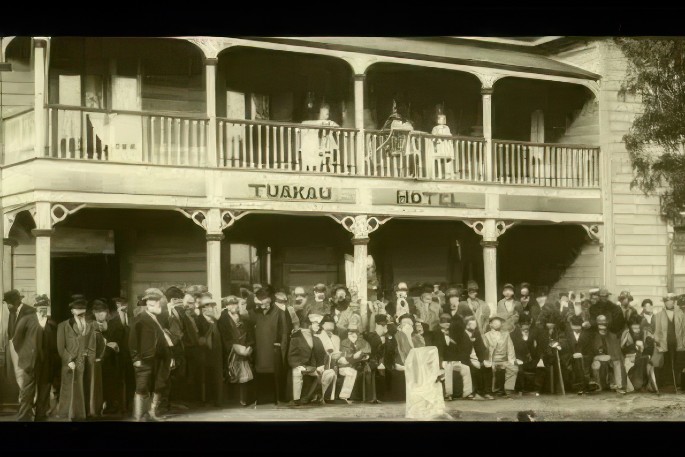This Content Is Only For Subscribers
A new multi-million dollar expansion programme will see one of the country’s oldest hotels double in size to meet growing tourist demand for heritage experiences in rural areas.
The Tuakau Hotel’s owners have warned more needs to be done to preserve our historic tourism infrastructure, with many of the fragile timber buildings vulnerable to natural disaster and fire.
As part of a new $5 million development, which is entering its initial planning stages, a multistory extension will be added to the 150-year-old hotel to capitalise on interest from the growing domestic and North American tourist markets.
The expansion follows a $4.5 million sympathetic restoration which transformed the derelict building into a world-class heritage hotel.
Tuakau has emerged as one of New Zealand’s fastest-growing communities, and is projected to double in size by 2031. The rapid population increase has put pressure on local accommodation providers, with occupancy levels regularly at full capacity.
Tuakau Hotel director Dee Bond says international interest in authentic, history-rich travel experiences is on the rise, a trend already recognised by Tourism New Zealand.
She says it hoped that construction on the hotel could begin as early as 2027, once design concepts have been approved.
“The Tuakau Hotel, the sixth oldest in New Zealand, was built during the country’s ‘Vogel Era’ – a time of major economic expansion and infrastructure development, fuelled by public borrowing and assisted immigration.
“It was constructed during a nationwide depression and coincided with the opening of the town’s railway station and it is an example of both resilience and progress. But like many of New Zealand’s historic hotels, it was vulnerable to neglect, redevelopment and natural disasters. We are grateful to have had the opportunity to preserve it.”
Dee says it’s vital to protect these heritage sites not just for future generations, but to unlock growing tourism potential.
“Recent Government data shows cultural and heritage activities now attract around 1.3 million international visitors annually, and that figure is climbing.
“The architecture and history of places like Tuakau Hotel resonate particularly well with North American and Australian tourists, who connect with buildings developed during similar eras in their own countries’ pasts.”
Dee says Tuakau itself is also on the rise, with the population growing from 4500 to more than 6500 in under two decades, driven in part by its proximity to Auckland and Hamilton and a residential property market offering greater value for money than urban centres.
“We are hoping to meet this demand by expanding our footprint and doubling in size. While we will be adding new suites in an adjacent building we are firmly committed to celebrating and maintaining the hotel’s heritage charm.
“There’s a perception that old buildings are liabilities. Restorations often require bespoke craftsmanship and heritage consultation and this can add to cost and time.
“However, preserving historic facilities is often a more sustainable option because it involves minimising the environmental impact of construction by reusing existing buildings and materials, reducing energy consumption through retrofitting and promoting responsible tourism.
“Buildings like these are part of our national story but they are fragile. Numerous historic facilities have been lost to fire and once they’re gone, they’re gone. The most sustainable way to care for them is to preserve them and use them,” she says.



